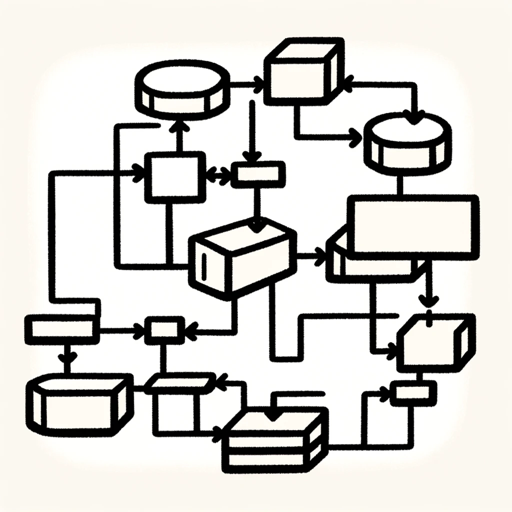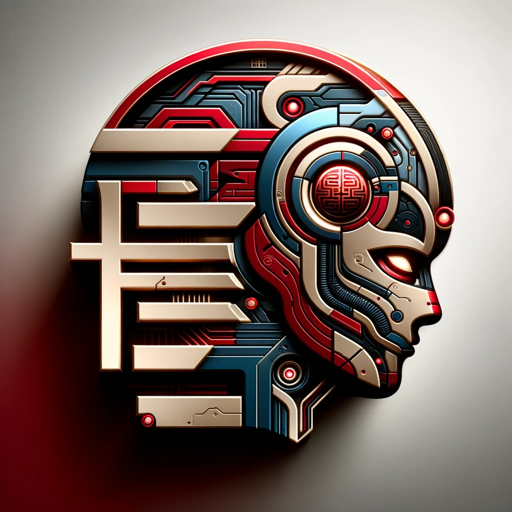Database Designer-database schema design tool
AI-powered database design for everyone
"Can you help me design a normalized database schema for an e-commerce application?"
"I'm having trouble with an SQL query for report generation. Can you assist?"
"What are the best practices for securing a database in a web application?"
"How can I improve the performance of my database with large datasets?"
Related Tools
Load MoreDatabase Architect (+Database Visualization)
Database Expert GPT: Design Databases + 🔴VISUALIZE IN-CHAT🔴+ Optimize queries, Create Normalized Database structures and more. For: SQL, Oracle, Salesforce, GA4
ERD Engineer
Creates Entity Relationship Diagrams for you next cool app!

SQL Database Architect
Expert in SQL DB design with the ability to print ER diagrams

ER Diagram Artist
ER Diagram Assistant with graphics
Helps in creating ER diagrams for business processes and display them with the help of an external API

SQL to ERD
Simply put SQL query code, get ER diagram.
20.0 / 5 (200 votes)
Introduction to Database Designer
Database Designer is a specialized tool designed to help users create, optimize, and manage database schemas. Its primary function is to ensure that databases are structured efficiently and scalable to meet both current and future demands. It assists in translating user requirements into robust database designs that maintain data integrity and performance. For instance, a Database Designer might help an e-commerce company design a database that efficiently handles customer data, orders, and product inventory, ensuring fast query performance and data consistency across multiple transactions.

Main Functions of Database Designer
Schema Design
Example
Creating a normalized schema for a hospital management system that includes tables for patients, doctors, appointments, and medical records.
Scenario
In this scenario, the Database Designer works with healthcare administrators to gather requirements and then designs a schema that minimizes data redundancy and ensures efficient data retrieval for reporting and operational needs.
Query Optimization
Example
Optimizing a complex SQL query for a financial application that processes large volumes of transactions to reduce execution time.
Scenario
A financial analyst reports that a crucial query is taking too long to execute. The Database Designer reviews the query, identifies inefficiencies, and rewrites it to enhance performance, possibly by indexing certain columns or restructuring the query logic.
Data Normalization
Example
Normalizing the database of a school administration system to eliminate data anomalies and ensure consistency.
Scenario
In a school database containing student, teacher, and class information, the Database Designer applies normalization principles to remove redundant data, thereby improving data integrity and making the database easier to maintain.
Ideal Users of Database Designer Services
Small to Medium Enterprises (SMEs)
SMEs benefit from Database Designer services by ensuring their databases are designed for scalability and efficiency. This is crucial as they grow and require more robust data handling capabilities without significant overhauls.
Large Corporations
Large corporations use Database Designer services to manage complex data environments, optimize performance, and maintain data integrity across various departments. This helps in achieving better operational efficiency and decision-making based on reliable data.

Guidelines for Using Database Designer
Step 1
Visit aichatonline.org for a free trial without login, also no need for ChatGPT Plus.
Step 2
Navigate to the Database Designer section from the main menu.
Step 3
Set up your database by defining tables, columns, and relationships using the intuitive interface.
Step 4
Use the provided tools to optimize your database schema for efficiency and scalability.
Step 5
Save and export your database schema, or integrate it directly with your development environment for seamless deployment.
Try other advanced and practical GPTs
SEO
Enhance Your Site with AI-Powered SEO

SEO
AI-powered SEO for Better Rankings

中文GPT4.0
AI-powered Chinese language assistance

中医
Balance your health with AI-powered TCM.

代码解释助手
AI-powered coding companion for all levels.

代码解释助手
Your AI-Powered Python and Deep Learning Assistant

DataBase
AI-driven solutions for database mastery.

SQL Database Architect
AI-powered SQL Database Design Tool

Cigars Database
Your AI-powered guide to cigars

Database Management Systems
AI-powered database management tool.

Chrome Extension Engineer
AI-powered Chrome Extension Development

API GPT
AI-powered API creation and design

- Database Design
- Collaborative Work
- Schema Optimization
- Data Integrity
- Development Integration
Common Questions About Database Designer
What are the prerequisites for using Database Designer?
No specific prerequisites are required, but basic knowledge of database concepts can be helpful.
Can Database Designer handle complex database schemas?
Yes, Database Designer is equipped to handle complex schemas with multiple tables and relationships.
Is it possible to import existing database schemas?
Yes, you can import existing schemas to modify and optimize them using Database Designer.
How does Database Designer ensure data integrity?
It supports various data integrity constraints such as primary keys, foreign keys, and unique constraints.
Can I collaborate with my team using Database Designer?
Yes, Database Designer supports collaborative features allowing multiple users to work on the same project simultaneously.